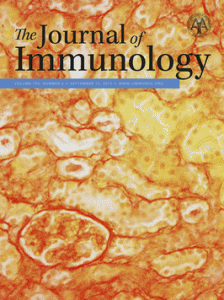 All but one of the authors of a study about the immune response to H. pylori have agreed to a retraction in The Journal of Immunology, due to two of the paper’s figures not being “faithfully represented.”
All but one of the authors of a study about the immune response to H. pylori have agreed to a retraction in The Journal of Immunology, due to two of the paper’s figures not being “faithfully represented.”
Authors of the 2006 paper said they were unable to provide the original unedited scans “due to inadequate archiving dating back almost 10 years.” The authors — with the exception of the first author, Sushil Kumar Pathak, apologized for the error.
The notice, which has been appended to the pdf, reads:
The following authors would like to retract the article titled “TLR4-Dependent NF-κB Activation and Mitogen- and Stress-Activated Protein Kinase 1-Triggered Phosphorylation Events Are Central to Helicobacter pylori Peptidyl Prolyl cis-, trans-Isomerase (HP0175)-Mediated Induction of IL-6 Release from Macrophages,” by Sushil Kumar Pathak, Sanchita Basu, Asima Bhattacharyya, Shresh Pathak, Anirban Banerjee, Joyoti Basu, and Manikuntala Kundu, The Journal of Immunology, 2006, 177: 7950–7958.
Some of the panels in the published versions of Figs. 5 and 6 have not been faithfully represented. Due to inadequate archiving dating back almost 10 years, the authors are unable to provide the original unedited scans. The authors would like to apologize to the readers, reviewers, and editors of The Journal of Immunology for this error. The first author does not agree to this retraction.
The authors were based at the Bose Institute in Kolkata, India at the time of the research. It appears as if Pathak has since moved to Stockholm University.
It has been cited 65 times, according to Thomson Scientific’s Web of Knowledge.
We asked the journal’s editor-in-chief Pamela Fink for more information but as we know from previous stories, JI only communicates with the corresponding author on “all issues involving corrections and retractions.”
We’ve reached out to Pathak and the paper’s corresponding author, Manikuntala Kundu. We’ll update the post if we hear back.
Hat tip: Rolf Degen
Like Retraction Watch? Consider making a tax-deductible contribution to support our growth. You can also follow us on Twitter, like us on Facebook, add us to your RSS reader, and sign up on our homepage for an email every time there’s a new post. Click here to review our Comments Policy.
I’ve always wondered how basic researchers are supposed to archive their data. The “old way” of using laboratory notebooks is useful for the lab, but difficult if things get tossed, a building gets burned down, etc.
For bioinformatics we can save ipython notebooks, R projects and the like, and use data repos to save raw data for others to audit/look over (e.g SRA, GEO,MassIVE, SWATHatlas, etc).
If editors decided to randomly request the original data for a bunch of papers, how many authors would be able to meet that standard?
No comment on PubPeer about this:
https://pubpeer.com/publications/17114467
So what exactly does unfaithful representation actually mean?
The first author has another paper corrected in Nature Immunology:
http://www.ncbi.nlm.nih.gov/pubmed/25689444
Direct extracellular interaction between the early secreted antigen ESAT-6 of Mycobacterium tuberculosis and TLR2 inhibits TLR signaling in macrophages
Sushil Kumar Pathak, Sanchita Basu, Kunal Kumar Basu, Anirban Banerjee, Shresh Pathak, Asima Bhattacharyya, Tsuneyasu Kaisho, Manikuntala Kundu & Joyoti Basu
Nature Immunology 16, 326 (2015) doi:10.1038/ni0315-326b
http://www.nature.com/ni/journal/v16/n3/full/ni0315-326b.html
“In the version of this article initially published, lanes 1, 2 and 4 of Figure 5b included duplicates. The correct immunoblot is now presented. The error has been corrected in the HTML and PDF versions of the article.”
Figutes in two Sushil Kumar Pathak papers questioned at PubPeer.
https://pubpeer.com/publications/CC6CB43A9734138F31EA9094119D9E
The above paper:
Direct extracellular interaction between the early secreted antigen ESAT-6 of Mycobacterium tuberculosis and TLR2 inhibits TLR signaling in macrophages
Sushil Kumar Pathak, Sanchita Basu, Kunal Kumar Basu, Anirban Banerjee, Shresh Pathak, Asima Bhattacharyya, Tsuneyasu Kaisho, Manikuntala Kundu, Joyoti Basu, Nature Immunology (2007)
Mycobacterium avium-induced matrix metalloproteinase-9 expression occurs in a cyclooxygenase-2-dependent manner and involves phosphorylation- and acetylation-dependent chromatin modification
Sanchita Basu, Shresh Pathak, Sushil Kumar Pathak, Asima Bhattacharyya, Anirban Banerjee, Manikuntala Kundu, Joyoti Basu, Cellular Microbiology (2007)
https://pubpeer.com/publications/B9E366CA42813FC6BE0006CC8D03EB
Jyoti Basu papers questioned at PubPeer (in addition to those in common with Sushil Kumar Pathak.
Novel Role of Phosphorylation-Dependent Interaction between FtsZ and FipA in Mycobacterial Cell Division
Kamakshi Sureka, Tofajjen Hossain, Partha Mukherjee, Paramita Chatterjee, Pratik Datta, Manikuntala Kundu, Joyoti Basu, PLoS ONE (2010)
https://pubpeer.com/publications/573102237E6C47A921C64CD5B20D9F
Novel role of Wag31 in protection of mycobacteria under oxidative stress
Partha Mukherjee, Kamakshi Sureka, Pratik Datta, Tofajjen Hossain, Subhasis Barik, Kali P. Das, Manikuntala Kundu, Joyoti Basu, Molecular Microbiology (2009)
https://pubpeer.com/publications/ED8E1D9D156C2B3C3743F027FAC330
Polyphosphate kinase is involved in stress-induced mprAB-sigE-rel signalling in mycobacteria
Kamakshi Sureka, Supratim Dey, Pratik Datta, Anil Kumar Singh, Arunava Dasgupta, Sébastien Rodrigue, Joyoti Basu, Manikuntala Kundu, Molecular Microbiology (2007)
https://pubpeer.com/publications/62D61A5B984D76F9EF640E7888D48D
Interaction between FtsW and penicillin-binding protein 3 (PBP3) directs PBP3 to mid-cell, controls cell septation and mediates the formation of a trimeric complex involving FtsZ, FtsW and PBP3 in mycobacteria
Pratik Datta, Arunava Dasgupta, Anil Kumar Singh, Partha Mukherjee, Manikuntala Kundu, Joyoti Basu, Molecular Microbiology (2006)
https://pubpeer.com/publications/3AA4582F37F31F56BAA49A23A27D40
The serine/threonine kinase PknB of Mycobacterium tuberculosis phosphorylates PBPA, a penicillin-binding protein required for cell division
Arunava Dasgupta, Pratik Datta, Manikuntala Kundu and Joyoti Basu, Microbiology (2006)
https://pubpeer.com/publications/A9A6D893D3C13B1B95529D03A9E6E1
Mitogen-activated protein kinases regulate -induced tumor necrosis factor-α release from macrophages
Asima Bhattacharyya, Shresh Pathak, Manikuntala Kundu, Joyoti Basu, FEMS Immunology & Medical Microbiology (2002)
https://pubpeer.com/publications/FB1766D8BC9105AE63B2D7CD43CC28
I am not alone in finding the term ‘reached out’ to be an effective emetic:
https://www.quora.com/Phrases/Why-do-people-use-the-term-reach-out-when-they-mean-contact?share=1
I am confused. The information above lists the authros as being:
Sushil Kumar Pathak, Sanchita Basu, Asima Bhattacharyya, Shresh Pathak, Anirban Banerjee, Joyoti Basu, and Manikuntala Kundu
But the PubMed retraction notice only lists two authors, Basu J, Kundu M:
http://www.ncbi.nlm.nih.gov/pubmed/26473200
Can anyone provide some clarification, please?